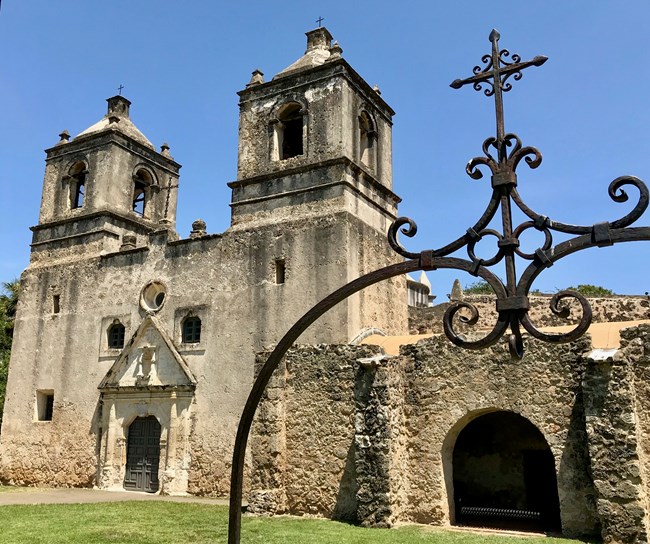Last updated: January 26, 2021
Article
San Antonio Missions on El Camino Real de los Tejas

Photo/NPS
Like Spanish Texas in general, San Antonio began as a response to encroaching French forces. Spaniards used three distinct institutions to populate New Spain’s northern frontier and preserve it from foreign influence: presidios, missions, and civilian settlements. Perhaps the most well-known of the three, missions existed primarily to convert American Indians into tax-paying Christians. The various branches of El Camino Real de los Tejas carried goods, people, and information that helped missions achieve this goal. The lack of an established supply line from the Texas coast to San Antonio made the Camino that much more important.
With many of the earliest missions in Spanish Texas concentrated either west of the Rio Grande or east of the Neches River, San Antonio served as a kind of midpoint. A settlement party in 1718 established San Antonio’s first presidio (San Antonio de Béxar) and first mission (San Antonio de Valero), as well as the villa of Béxar. In 1720, a Franciscan missionary established Mission San José y San Miguel de Aguayo near the presidio. In 1731, missions Purísima Concepción, San Francisco de la Espada, and San Juan Capistrano—originally sited in East Texas—were relocated to the appealing banks of the San Antonio River.
Simply put, neither San Antonio nor its iconic missions could have existed without El Camino Real de los Tejas. When the three missions mentioned above moved to San Antonio in 1731, they were not initially self-sustaining; thus, they relied on provisions (like corn and cattle) from Spanish outposts to the south, such as Monclova and Saltillo. Because raids by Eastern Apaches often disrupted northbound supply caravans, Spanish authorities began ordering nine-person escorts whenever San Antonio’s missions needed to be re-provisioned. Apaches knew as well as the Spaniards that valuable merchandise traveled along the Camino.
The missions’ connections to other areas of the empire, facilitated by El Camino Real de los Tejas, frustrated local merchants in San Antonio. Friars, who benefited from virtually unlimited American Indian labor and plentiful water for their fields, did not keep their money within the community; instead, they imported supplies from larger cities to the south. There also existed general jealousy about the mission’s supply of livestock, increased since the 1680s by almost every expedition into Texas. Because of the ample pasturage available along the San Antonio River, the area’s missions became some of the first large-scale ranching operations in Texas. El Camino Real de los Tejas made San Antonio’s missions not only possible, but profitable.
Donald Chipman, Spanish Texas, 1519-1821 (Austin: University of Texas Press, 2010), 132-34.
Jesus F. de la Teja, “A Spanish Borderlands Community: San Antonio,” OAH Magazine of History 14, no. 4 (Summer, 2000): 25-28.
David Weber, The Spanish Frontier in North America (New Haven, Conn.: Yale University Press, 1992): 175, 194.

Photo/NPS


